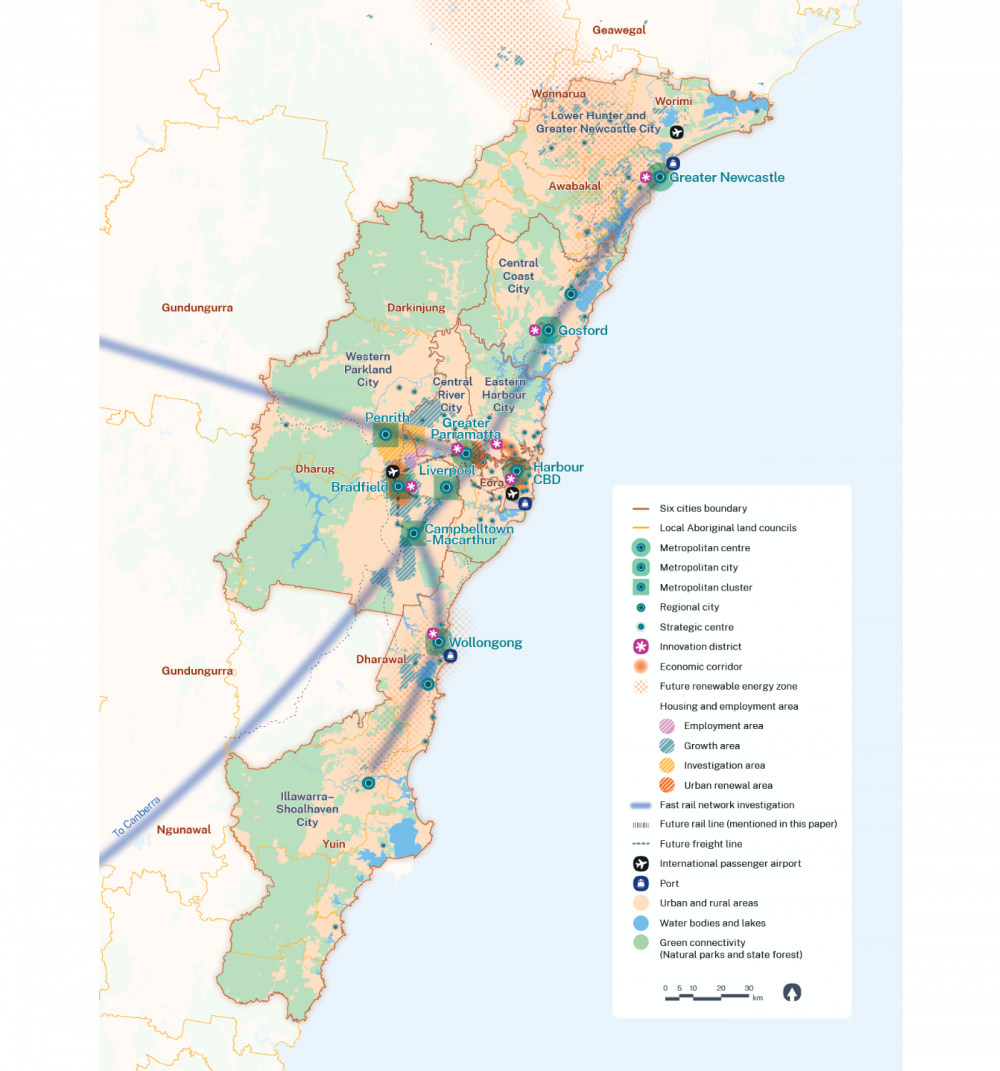The evolution of Greater Sydney from a Metropolis of Three Cities to that of a Six Cities Region has been unveiled with the release of the Greater Cities Commission’s (GCC) Six Cities Region Discussion Paper.
The Discussion Paper presents the vision, ideas and suggested actions and directions for the future growth, development, and evolution of the City Region.
The Six Cities Region encompassing Newcastle, the Central Coast, Wollongong and Greater Sydney comprising the Western Parkland City, Central River City and Eastern Harbour City, will be connected through enhanced technology and fast rail with housing targets including affordable housing targets to be set for each local government area. The Discussion Paper builds on work already undertaken by the GCC (formerly the Greater Sydney Commission) and will develop fresh City Plans for each of the cities in the region.



